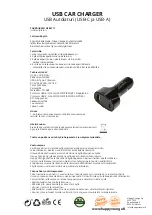
Black plate (24,1)
Chevrolet Caprice Police Patrol Vehicle (GMNA-Localizing-U.S.-6067651) -
2014 - crc - 8/22/13
9-24
Driving and Operating
Parking Brake
The parking brake pedal is to the
left of the brake pedal, near the
driver door.
To set the parking brake, hold the
brake pedal down, then push the
parking brake pedal down to its fully
applied position.
If the ignition is on, the parking
brake light will come on. See
Parking Brake Light on page 5-14
To release the parking brake, hold
the regular brake pedal down, then
push down momentarily on the
parking brake pedal until you feel
the pedal release. Slowly pull your
foot up off the parking brake pedal.
If the parking brake is not released
when you begin to drive, the parking
brake light will flash and a chime will
sound warning you that the parking
brake is still on.
If the ignition is on when the parking
brake is released, the parking brake
light will go off.
{
Caution
Driving with the parking brake on
can overheat the brake system
and cause premature wear or
damage to brake system parts.
Make sure that the parking brake
is fully released and the brake
warning light is off before driving.
Hill Start Assist (HSA)
This vehicle has an HSA feature,
which may be useful when the
vehicle is stopped on a grade. This
feature is designed to prevent the
vehicle from rolling, either forward or
rearward, during vehicle drive off.
After the driver completely stops
and holds the vehicle in a complete
standstill on a grade, HSA will be
automatically activated. During the
transition period between when the
driver releases the brake pedal and
starts to accelerate to drive off on a
grade, HSA holds the braking
pressure for a maximum of
two seconds to ensure that there is
no rolling. The brakes will
automatically release when the
accelerator pedal is applied within
the two-second window. It will not
activate if the vehicle is in a drive
gear and facing downhill, or if the
vehicle is facing uphill and in
R (Reverse).
















































